Editor’s Note: Todd Graham is a professor of debate at Southern Illinois University. His teams have won five national championships; he’s been named the national debate coach of the year three times and been presented with the lifetime achievement award in academia and debate. You can find him at his website, on Facebook and on Twitter. The views expressed in this commentary are his own. View more opinion at CNN.
Sometimes less is more with presidential debates — and that was certainly the case with the second 2024 Republican presidential primary debate on Wednesday evening.
Here’s a look at how the seven debaters — with a noticeably absent former president and party front-runner — did on the night.
Nikki Haley
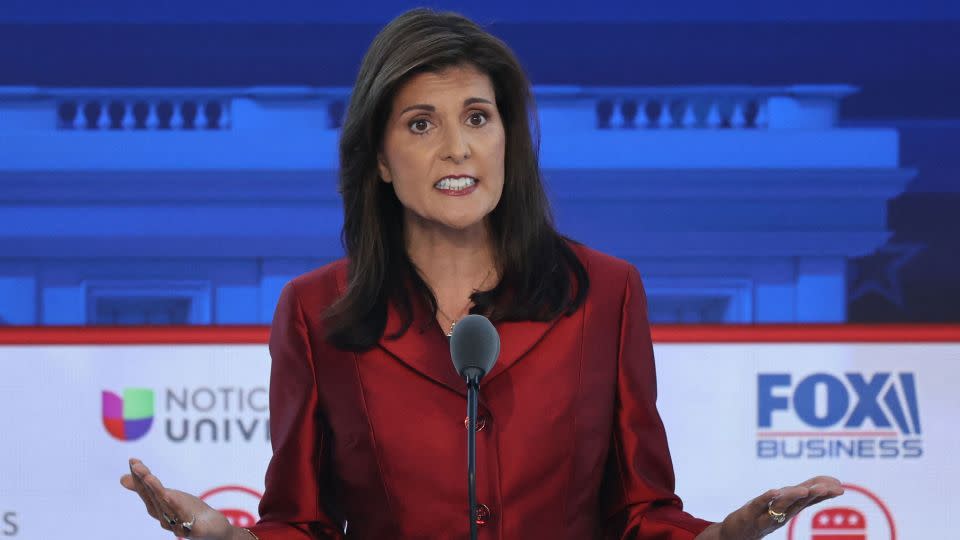
The former governor of South Carolina and ambassador to the United Nations delivered another solid performance. I didn’t mind Nikki Haley not being the center of attention during the first half of the debate. She didn’t need more speaking time because Haley valued quality over quantity. She was doing great until she appeared to make a tactical decision to be more involved, and that slippery slope led Haley into cross-talking, interrupting and petty bickering.
What a shame, because Haley’s answers to the debate questions were a level above everyone else on stage.
For the most part, Haley stood out by answering the actual questions on topics such as striking workers and our educational system. And Haley had the most effective approach of the debaters when mentioning former president Donald Trump. Not wanting to alienate the Republican base, Haley’s strategy was smart. She simply listed a number of areas where Trump could have focused on more than he did — and Haley’s plan is to pick up what he left off. Regardless of the topic, I felt that Haley’s understanding of the issues and the depth of her answers were unrivaled.
B
Ron DeSantis
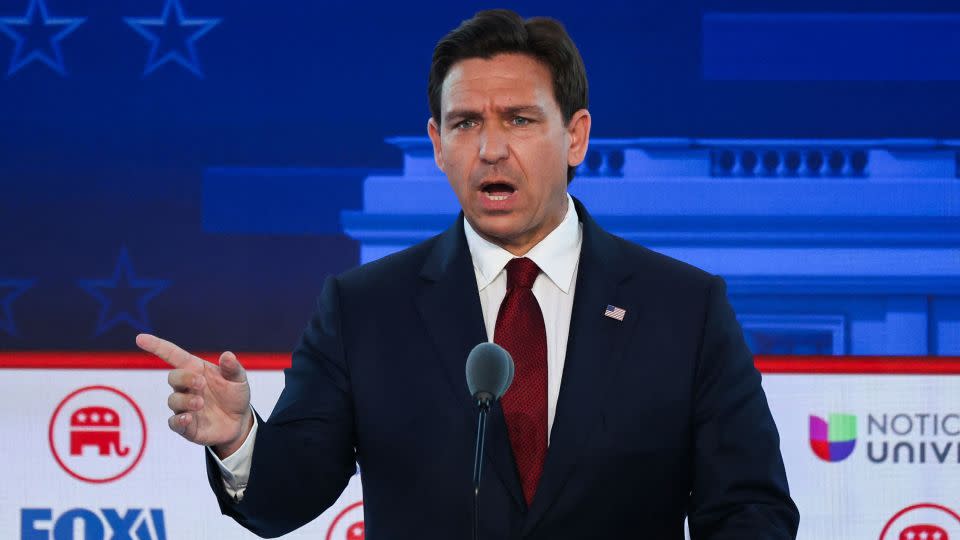
Ron DeSantis had some improvements in this debate from last time. His offense was stronger, touting his accomplishments as Florida’s governor. But DeSantis had difficulty defending some of his proposals, and that cut into the effectiveness of his approach. The debate began exactly like the last one: a closeup of DeSantis’ painfully forced (fake) smile. It’s a terrible way to start a debate, and he did it again. But then he provided some good answers on China and the threat it poses. DeSantis went with the “big fights and big victories” approach and it was rhetorically compelling. Time will tell if these big fights (Disney, redistricting voting maps, education policies, etc.) were indeed victories, since many of them are still ongoing.
Where DeSantis had trouble was on Ukraine. His blanket statement that he will end the war made it appear as if DeSantis might appease Russia. As former New Jersey Gov. Chris Christie alluded to in the debate: Russia has committed atrocious acts to the country and people of Ukraine. It’s an insulting false equivalence to then hear DeSantis say the United States was also being invaded, but by immigration.
C
Mike Pence
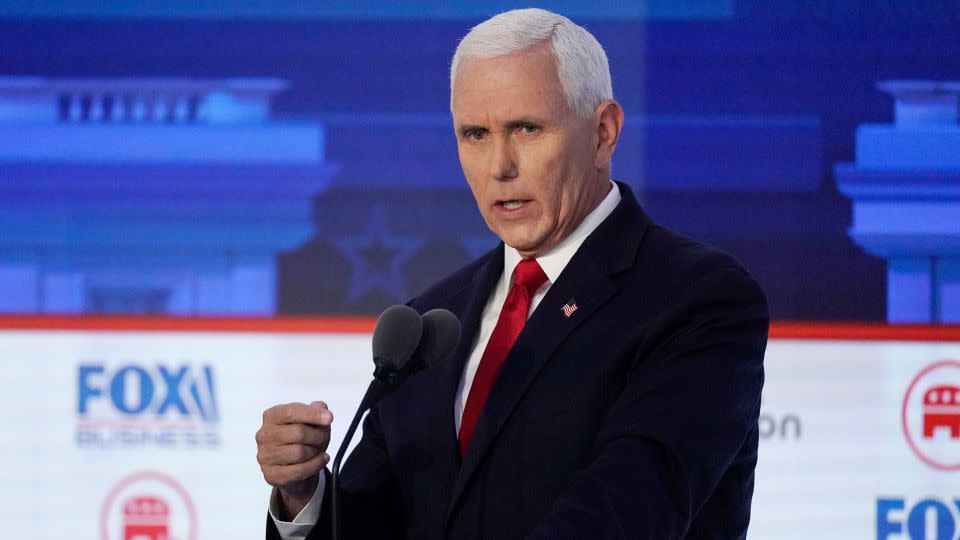
It’s crunch time for the former vice president. And Mike Pence didn’t rise to the occasion. Pence had no real presence on the debate stage. While Pence was involved in some discussions, he wasn’t leading any of them. Pence was once the vice president of the United States, but on the debate stage he was anything but powerful. Pence lacks even the slightest hint of swagger. Perhaps he can borrow some from businessman Vivek Ramaswamy.
One good line does not a debate make. Yes, Pence won a skirmish with Ramaswamy about Ramaswamy’s lack of voting in presidential elections. But that’s not enough. When he wasn’t timid, Pence was pandering, as was obvious with the topic of mass shootings. Pence was the vice president during many mass shootings, so his outrage and his so-called solution (death penalty — which Pence can’t prove solves mass shootings) were insufficient. Finally, Pence was asked how to curb violence committed against the LGBTQ community. His answer? He’s been sleeping with a teacher for 38 years (Pence randomly inserted that information about his wife into his answer), and then he said he’ll protect the LGBTQ community by banning or limiting transgender surgery. Let me rephrase. Pence will protect the LGBTQ community by removing the ‘T.’ Research shows this would actually make things like bullying, suicides and depression more likely if kids are denied access to gender-affirming care.
D
Doug Burgum
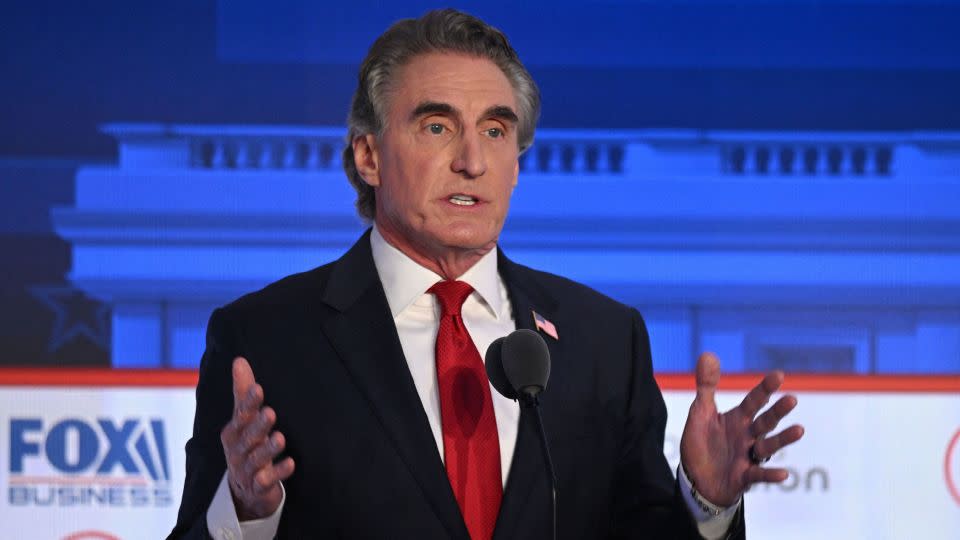
When it comes to knowledge and experience solving problems, the governor of North Dakota is on par with Haley. It’s not his policies that are holding him back in these debates. Doug Burgum’s biggest problem is that he hasn’t learned which of his arguments deserve elevation in a limited amount of debating time. He doesn’t have this debate thing figured out, because if he did, then he’d be a force to reckon with … or at least as much as any governor of North Dakota could be.
Burgum’s debating approach was to wait until he was called on. That didn’t work, so Burgum later opted for the opposite approach of cross-talk and interrupting. Predictably, that didn’t work either because while Burgum wasn’t forceful enough to grab the attention of the camera or audience, he was disruptive enough to catch the ire of the moderators, especially Fox News host Dana Perino. And Perino was unforgiving. While other candidates spoke out of turn quite often, Perino dropped the hammer on Burgum every time he tried to speak without being called on. It was noticeably one-sided. At one moment in the debate, Burgum demanded (not kidding — he actually said the word demand) to be allowed to speak. Forceful. Impressive. And ignored again. Humbling.
The bigger issue was that Burgum doesn’t know how to prioritize arguments. In general, debates have limited time, so while you might have five points you normally make on any given topic, you only have time for one or two in the debate, so put your strongest arguments first. For Burgum, on the topic of health care, he gave an underdeveloped answer focusing on 2008 software as the culprit and I have no idea what he was talking about. Burgum lost his audience in the weeds then and again later with something about quarterly required lease sales. Not good argument priority at all.
D
Chris Christie
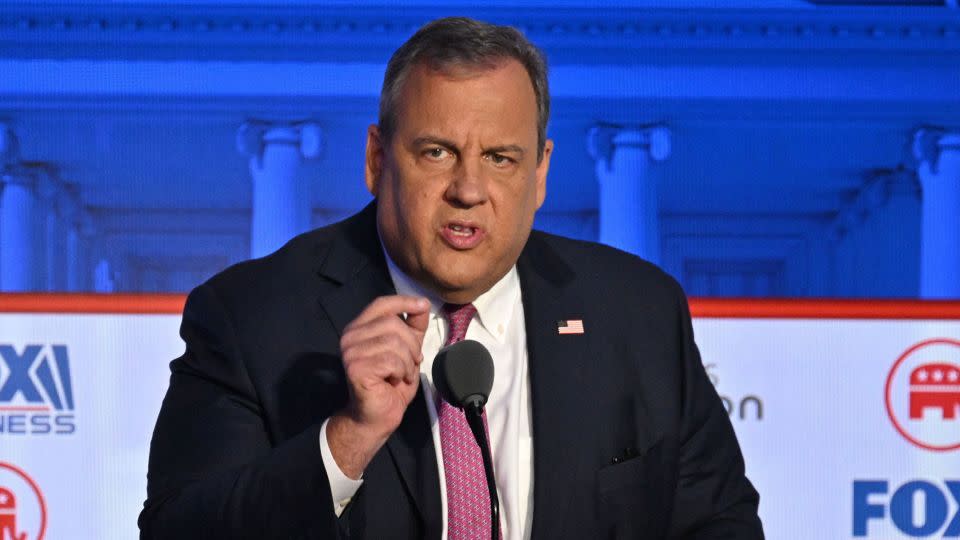
The former governor of New Jersey was expected to criticize Trump, and a couple of those punches landed. Christie knew Trump would be watching so he talked directly to him through the camera. It was pretty sweet. Christie’s mistake was that his attacks lacked a central theme or focus. Plus, Christie wasn’t bold enough. It’s now or never, yet I sensed Christie was still holding back.
Christie’s projected persona got banged up with a question that quoted him as saying immigrants should be tracked like FedEx packages. Finally, when attacking the teacher’s union, Christie went over the line for me: “When you have the president of the US sleeping with a member of the teacher’s union, there is no chance that you can take the stranglehold away from the teacher’s union every day.” I think most people were taken by surprise, and not in a good way.
D
Vivek Ramaswamy
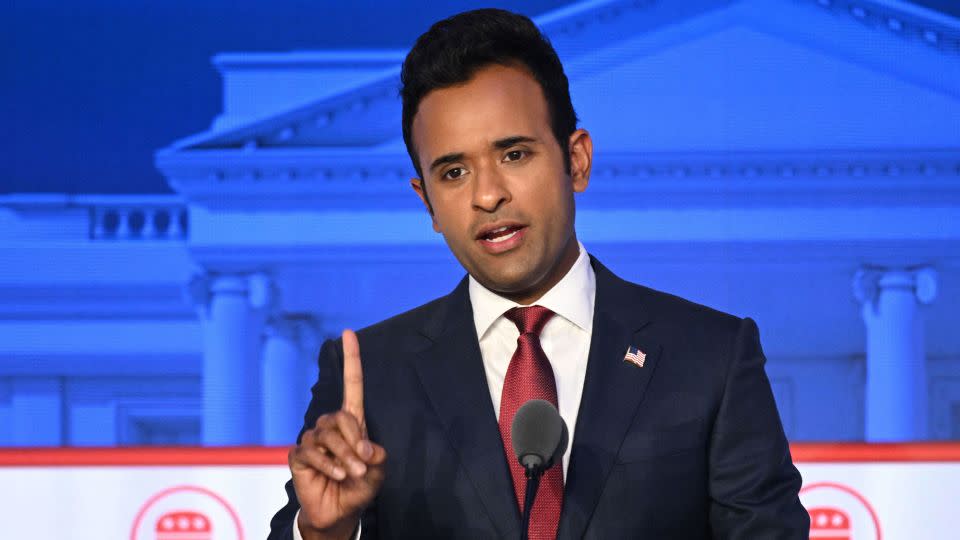
Vivek Ramaswamy is confidently vapid. His arrogance is evident, but his depth of knowledge and policy solutions don’t support his ego. The impression I got throughout the debate was that Ramaswamy can’t help himself. He’s aloof, smug and proud of it. Here’s a typical Ramaswamy answer — trust me, it doesn’t matter the topic or question: “I have a radical idea for the Republican party. We need to win elections.” And then Ramaswamy used his own version of Trump’s famous “I alone can fix it” line when he said, “There’s exactly one person in the Republican party which talks a big game about reaching young people and that’s me.” Victimhood is a choice, and he understands the 14th Amendment because he’s the only one who has read it, are two more random bombs he dropped when he wasn’t interrupting the others.
One last note on Ramaswamy: He said he’d ban genital mutilation under the age of 18. While he was referring to banning gender-affirming care for transgender youth, does his statement equally address circumcision? As he worded it in the debate, Ramaswamy’s policy wasn’t clear on that point.
D
Tim Scott
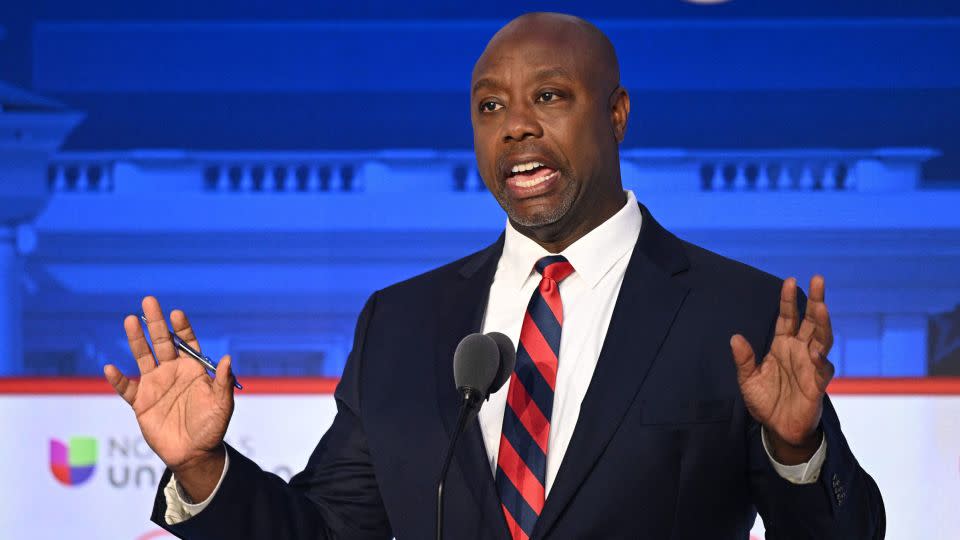
The Senator from South Carolina was having a mundane debate throughout the first half. But it got much worse for Tim Scott in the second half of the debate with answers that were either generic, contradictory or borderline ridiculous.
The generic answers all sounded the same. Everything was a cheerleading speech with the same cadence, tonality, pacing and ending with rising momentum. Scott’s style was to provide backstories that ended in preaching the American Dream. That’s not optimal, but it works in a pinch during debates when you don’t want to (or can’t) answer the specifics of a question.
Believe it or not, that’s actually better than when Scott attempted a deeper dive. After all, why rally around the flag when you can curse about a curtain?
Oh. My. God. Those of you who tuned out early missed the great curtain debate. I’m not kidding. Haley and Scott went several rounds and a few minutes (former President Barack Obama was even mentioned) about a dang curtain in a presidential debate. Since it was important, for unknown reasons, for Scott to win this particular battle, he added visual effects. Scott decided to mimic a person hanging curtains. Forgive me, but Scott is either terrible at charades or he’s never hung a curtain in his life.
Finally, my favorite moment from the debate was when Scott accidentally supported critical race theory. I was quite surprised to hear Scott’s word choice when talking about black families. He said, “We survived discrimination being woven into the laws of our country.” That’s what critical race theory is. Discrimination is woven into our laws.
F
For more CNN news and newsletters create an account at CNN.com



